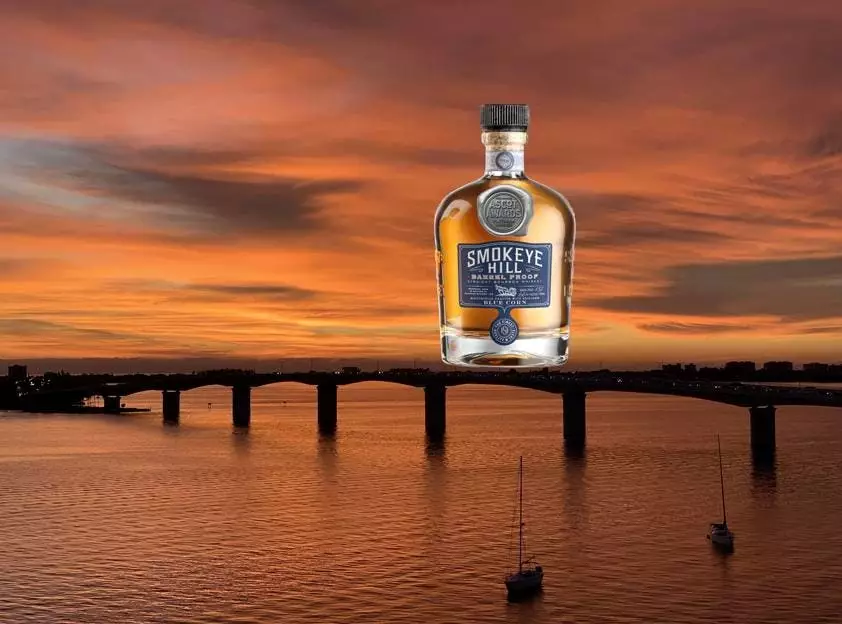Whiskey has emerged as one of the most dynamic spirits in the world, thanks to a notable resurgence that has seen a proliferation of remarkable distilleries. While Scotland has long been regarded as the heartland of single malt whiskey, it’s now evident that excellence knows no geographical bounds. From artisanal distilleries in Oregon to innovative producers in Latin America, the whiskey landscape is evolving rapidly. This article delves into the current trend where exceptional bourbon is also emerging from outside its traditional cradle in Kentucky, exemplified by the recent acclaim received by Smokeye Hill Barrel Proof Bourbon.
Traditionally, the perception of bourbon was firmly rooted in the lush landscape of Kentucky, where the majority of the world’s bourbon is produced. In fact, an overwhelming 95% of bourbon originates from this region. Yet, as the whiskey industry expands, numerous states are contributing unique interpretations and flavors to the bourbon category. This geographical diversification invites consumers to rethink their preconceived notions of bourbon as solely a product of the Bluegrass State.
Smokeye Hill Barrel Proof Bourbon serves as a prime illustration of this evolution. Recognized as the “Best In Show” at the prestigious 2024 ASCOT Awards, Smokeye Hill is a testament to innovation in whiskey making. As the industry witnesses an influx of new producers, bourbon enthusiasts are starting to realize that high-quality offerings can indeed come from other regions, effectively shattering long-held stereotypes.
What sets Smokeye Hill apart is its distinctive use of an heirloom variety of blue corn, which adds an unexpected twist to the traditional bourbon flavor profile. Alongside this unique ingredient, the mash bill also comprises yellow maize, rye, and malted barley, revealing a complex array of flavors. The whiskey is meticulously crafted in Colorado Springs, where it is barreled, aged, and bottled—a labor of love that reflects a commitment to quality.
The bourbon, aged for a minimum of five years, boasts a staggering ABV of 132-proof in its winning batch. Despite its high proof, this bourbon disarms with a smoothness that challenges any expectations about high-proof spirits. On the nose, the ethanol is pronounced but balanced with burnt caramel, leading into a sip that reveals layers of sweetness reminiscent of ripe berries. The finish is equally complex, characterized by charred oak and tanned leather that give way to a luxurious richness. This balance of flavors and the delayed finish exemplifies why it stands alongside esteemed competitors like George T. Stagg.
An intriguing question arises when one considers the geographical context of Smokeye Hill’s production. The whiskey distillery’s high-altitude environment at 6,000 feet in the Rockies could play a pivotal role in enhancing the flavor interactions between the whiskey and the oak barrels. The altitude is known to affect the maturation process, allowing for unique characteristics that might not be present in spirits produced at lower elevations.
Moreover, the choice to allow the bourbon to be unfiltered and undiluted upon exiting the barrel further emphasizes the producers’ commitment to retaining the integrity of the spirit. Such decisions have engendered a buzz around Smokeye Hill, leading to dramatic increases in demand and price on secondary markets—initially priced at $90, it now commands nearly tenfold that value.
As whiskey lovers, it is crucial to remain open-minded and adventurous in exploring the broadening horizons of this spirited world. While legacy distilleries continue to be revered, the modern whiskey renaissance encourages enthusiasts to seek out new players on the stage. The rise of non-traditional bourbon sources emphasizes that innovation transcends geography.
Today, the quest for quality whiskey is increasingly adventurous—those willing to venture beyond established borders might discover the next outstanding bourbon or single malt. The industry’s current trajectory signifies not only a flourishing marketplace but an exciting era for whiskey lovers. Therefore, let curiosity pave the way for discoveries from unexpected and unconventional distilleries, as the modern whiskey boom guarantees that the spirit of exploration is alive and well.

